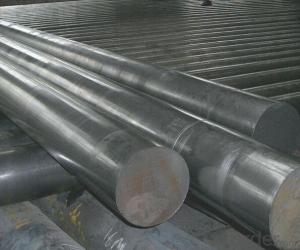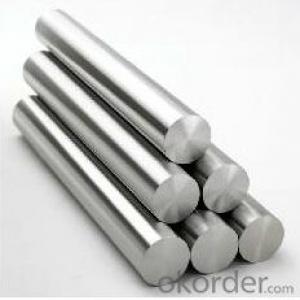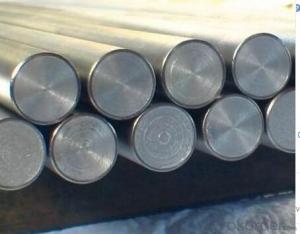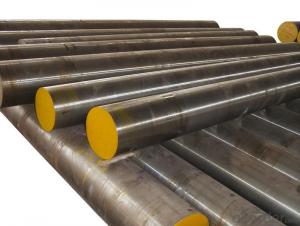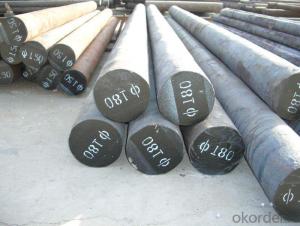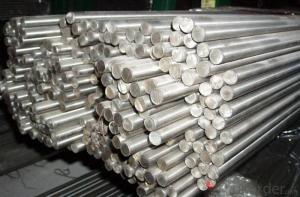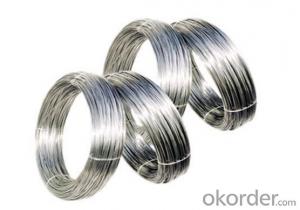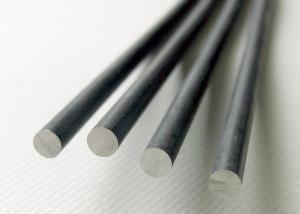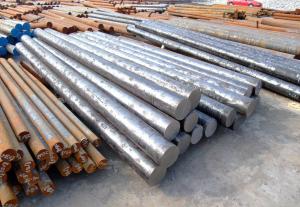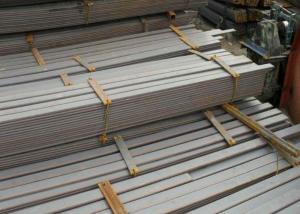Grade SAE51200/ GCr15 / 100Cr6 Bearing Steel Hot Rolled
- Loading Port:
- Tianjin
- Payment Terms:
- TT OR LC
- Min Order Qty:
- 3 m.t.
- Supply Capability:
- 10000 m.t./month
OKorder Service Pledge
OKorder Financial Service
You Might Also Like
Specification
Product Description:
OKorder is offering Grade SAE51200/ GCr15 / 100cr6 Bearing Steel at great prices with worldwide shipping. Our supplier is a world-class manufacturer of steel, with our products utilized the world over. OKorder annually supplies products to European, North American and Asian markets. We provide quotations within 24 hours of receiving an inquiry and guarantee competitive prices.
Product Applications:
Grade SAE51200/ GCr15 / 100cr6 Bearing Steel are ideal for structural applications and are widely used in the construction of buildings and bridges, and the manufacturing, petrochemical, and transportation industries.
Product Advantages:
OKorder's Grade SAE51200/ GCr15 / 100cr6 Bearing Steel are durable, strong, and resist corrosion.
Chemical Compositions:
Grade | AISI 52100, ASTM E52100, DIN 1.3505,JIS SUJ2, GCr15 |
| Length: 2000-13000mm or as required |
Shape | Round Bar |
Type | Alloy Steel Bar |
Delivery Condition | Black Surface |
Material | Bearing Steel |
Technique | Hot Rolled |
Packaging & Delivery of Bearing Steel
Mark: Heat No. will be cold stamped and Steel grade, diameter (mm), length (mm), and the manufacturer LOGO and weight (kg) is painted.
Standard seaworthy packing or as customer required
Delivery time: Within 30 days after order is confirmed.
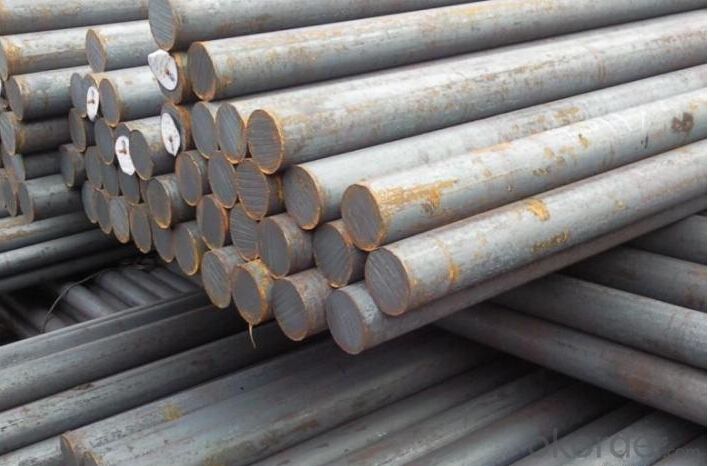
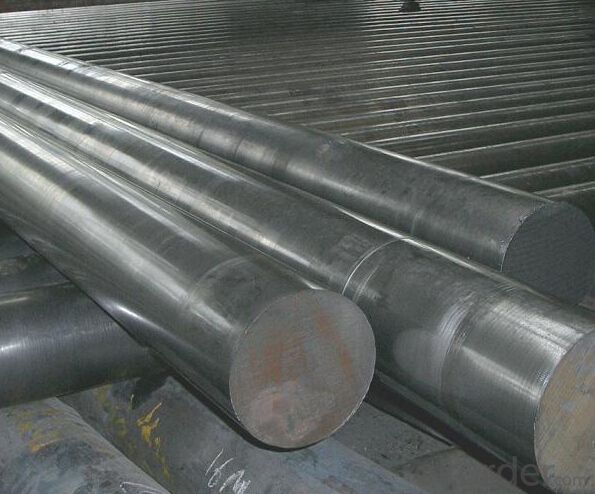
- Q: How does special steel contribute to the renewable energy industry?
- Special steel contributes to the renewable energy industry by providing durable and high-performance materials for various applications. It is used in the construction of wind turbines, solar panels, and hydroelectric power plants, enhancing their efficiency and longevity. Special steel also plays a crucial role in the manufacturing of energy storage systems, such as batteries, ensuring their reliability and safety. Overall, special steel enables the renewable energy sector to achieve higher energy output, reduce carbon emissions, and accelerate the global transition to sustainable sources of power.
- Q: What are the different passivation techniques used for special steel?
- There are several passivation techniques used for special steel, including chemical passivation, electrochemical passivation, and mechanical passivation. Chemical passivation involves treating the steel surface with acids or other chemical solutions to remove impurities and create a passive film that protects against corrosion. Electrochemical passivation utilizes an electrical current to enhance the formation of the protective oxide layer. Mechanical passivation involves processes like abrasive blasting or grinding to remove contaminants and improve the surface finish. These techniques are commonly employed to enhance the corrosion resistance and durability of special steel.
- Q: What are the different methods of joining special steel?
- There are various techniques available for joining special steel, each presenting its own advantages and limitations. Some of the most frequently employed methods comprise: 1. Welding: The most prevalent technique for joining steel involves melting the base material and incorporating a filler material to establish a robust connection. Depending on the specific requirements, different welding techniques like arc welding, gas welding, and laser welding can be utilized. 2. Brazing: This approach necessitates heating the steel and melting a filler metal with a lower melting point, which then infiltrates the joint through capillary action. Brazing is commonly employed when joining dissimilar metals or when a lower-temperature joining process is indispensable. 3. Soldering: Similar to brazing, soldering also employs a filler material with a lower melting point to join the steel. However, soldering involves melting the filler material without melting the base material. It is often employed for electrical connections and delicate applications. 4. Mechanical fastening: This method entails utilizing mechanical means such as bolts, screws, rivets, or other types of fasteners to join the steel components. Mechanical fastening is frequently favored in situations where disassembly or maintenance is necessary. 5. Adhesive bonding: Special steel can also be joined using adhesives that establish a sturdy bond between the surfaces. Adhesive bonding is suitable for joining intricate shapes, minimizing stress concentrations, and providing exceptional corrosion resistance. 6. Friction welding: This technique involves the application of pressure to rub or spin two steel components together, generating heat that creates a bond. Friction welding is commonly employed for joining high-strength or heat-treated steels. 7. Explosive welding: This method employs explosives to facilitate a high-speed collision between two steel surfaces, resulting in a bond formed in a solid state. Explosive welding is frequently used for joining dissimilar metals or when high strength and corrosion resistance are required. The selection of the appropriate joining method depends on factors such as the type of steel, the desired strength and durability of the joint, the specific application requirements, and the availability of equipment and expertise.
- Q: How does special steel contribute to the automotive aftermarket industry?
- The automotive aftermarket industry greatly benefits from the use of special steel, as it offers various advantages that enhance the performance, durability, and safety of vehicles. To begin with, special steel is renowned for its exceptional strength and durability. This characteristic allows manufacturers and suppliers to create high-performance components and parts that can withstand extreme conditions and heavy usage. Engine parts, suspension systems, and chassis components all benefit from the superior strength of special steel, ensuring their longevity and reliability. Furthermore, special steel provides excellent corrosion resistance, which is crucial for automotive components exposed to different weather conditions and road environments. By utilizing corrosion-resistant steel, suppliers can produce parts that are less susceptible to rust and degradation, ultimately prolonging the lifespan of vehicles and reducing the need for frequent replacements. Additionally, special steel enables the production of lightweight components without compromising on strength. As the demand for fuel efficiency and reduced emissions continues to grow, lightweight materials are highly sought after in the automotive industry. By utilizing special steel, suppliers can create lightweight parts that contribute to improved fuel economy and overall vehicle performance. Moreover, the versatility of special steel allows for the development of complex and intricate components, which supports advancements in vehicle technology. From precision-engineered gears and shafts to specialized parts for electric vehicles, special steel can be tailored to meet specific automotive requirements, driving continuous innovation within the industry. Finally, special steel offers cost-effectiveness in the automotive aftermarket industry. While the initial cost of special steel may be higher than conventional steel, its durability and longevity result in reduced maintenance and replacement costs over time. This benefit is particularly significant for suppliers and vehicle owners, as it helps minimize expenses and ensures a higher return on investment. In conclusion, special steel plays a crucial role in the automotive aftermarket industry by providing strength, durability, corrosion resistance, lightweight properties, versatility, and cost-effectiveness. These qualities contribute to the overall performance, safety, and longevity of vehicles, making special steel an essential material in the development of high-quality aftermarket components and parts.
- Q: What are the environmental impacts of manufacturing special steel?
- Manufacturing special steel has significant environmental impacts due to its energy-intensive production process and the extraction of raw materials. The production of special steel requires high temperatures and uses large amounts of fossil fuel-based energy, resulting in substantial greenhouse gas emissions contributing to climate change. Additionally, the extraction of iron ore and other raw materials for steel production can lead to deforestation, habitat destruction, and water pollution. The disposal of steel waste and byproducts also poses challenges, as it can contaminate soil and water sources. Therefore, the environmental impacts of manufacturing special steel must be carefully managed and mitigated through sustainable practices and technologies.
- Q: What are the requirements for special steel used in high-pressure applications?
- To ensure its durability and reliability under extreme conditions, special steel utilized in high-pressure applications must fulfill specific criteria. Some of the crucial requirements for this type of steel include the following: 1. Exceptional strength: The steel must possess extraordinary strength to withstand the intense forces and pressures it will encounter. This allows it to resist deformation and maintain its structural integrity. 2. Remarkable corrosion resistance: The steel needs to exhibit a high resistance to corrosion since it will frequently come into contact with aggressive fluids or gases in high-pressure environments. This prevents deterioration over time and helps sustain its performance and longevity. 3. Good weldability: The special steel employed in high-pressure applications should have good weldability in order to facilitate easy and efficient joining of different components. This ensures the overall integrity and reliability of the system. 4. Endurance against high temperatures: The steel must be capable of withstanding elevated temperatures without compromising its mechanical properties. This is particularly critical in applications where high-pressure fluids or gases are heated or where the steel is exposed to extreme heat sources. 5. Resistance to fatigue: The special steel should display a high resistance to fatigue failure, as it will often undergo cyclic loading and pressure fluctuations. This enables the steel to endure repeated stress and pressure cycles without developing cracks or failures. 6. Precise dimensional tolerance: The steel should possess precise dimensional tolerance to ensure proper fit and functionality within the high-pressure system. This helps minimize leakage or any potential weak points in the system. 7. Compliance with industry standards: The special steel used in high-pressure applications must meet relevant industry standards and specifications, such as those established by organizations like the American Society of Mechanical Engineers (ASME) or the American Petroleum Institute (API). This guarantees that the steel meets the required quality and performance standards. In summary, special steel for high-pressure applications must possess a combination of extraordinary strength, remarkable corrosion resistance, good weldability, endurance against high temperatures, resistance to fatigue, precise dimensional tolerance, and compliance with industry standards to ensure its suitability and reliability in demanding environments.
- Q: What are the different coating techniques used for special steel?
- There are several different coating techniques used for special steel, including electroplating, hot-dip galvanizing, powder coating, and thermal spray coating. Each technique has its own advantages and uses, depending on the desired outcome and the specific properties of the special steel being coated.
- Q: What are the properties of magnesium alloys?
- Magnesium alloys possess several important properties. They have a low density, making them lightweight and ideal for applications where weight reduction is crucial. They exhibit high strength-to-weight ratio, which makes them strong and durable. Magnesium alloys also have good heat dissipation properties, making them suitable for applications that require efficient cooling. They have excellent corrosion resistance, particularly when properly coated or treated. Additionally, magnesium alloys demonstrate good machinability and can be easily formed into various shapes and components.
- Q: How does special steel contribute to the manufacturing of automotive engine components?
- Special steel plays a crucial role in the manufacturing of automotive engine components by providing enhanced strength, durability, and performance. Due to its unique properties, special steel is used in various critical engine parts, such as crankshafts, camshafts, connecting rods, valve springs, and cylinder heads. One of the primary benefits of special steel in automotive engine components is its exceptional strength. Engine parts made from special steel can withstand high stress, heavy loads, and extreme temperatures without deformation or failure. This strength ensures that the engine operates efficiently and reliably, even under demanding conditions. Moreover, special steel offers superior durability, which is essential for the longevity and performance of engine components. Special steel's resistance to wear, corrosion, and fatigue ensures that the engine parts maintain their functionality over an extended period. This durability translates into increased lifespan and reduced maintenance requirements for the engine, ultimately leading to higher customer satisfaction and lower costs for vehicle owners. The use of special steel in automotive engine components also contributes to improved performance. Special steel allows for the creation of lightweight components, reducing the overall weight of the engine and improving fuel efficiency. Additionally, the high precision and dimensional accuracy achievable with special steel manufacturing processes result in better engine performance, reduced friction, and improved power output. Furthermore, special steel offers excellent machinability, which simplifies the manufacturing process of engine components. Its ability to be easily formed, cut, and shaped enables the production of complex designs and intricate features, leading to enhanced efficiency and performance in the final product. In summary, special steel is vital in the manufacturing of automotive engine components due to its exceptional strength, durability, and performance. Its usage results in engines that are more reliable, efficient, and long-lasting, ultimately contributing to the overall quality and satisfaction of vehicles.
- Q: What are the key differences between special steel and tool steel?
- Special steel and tool steel are both types of steel that have specific properties and applications. However, there are some key differences between the two. 1. Composition: Special steel is a broad term that encompasses a variety of steel alloys with specific properties for different applications. It can include stainless steel, high-strength alloy steel, and heat-resistant steel, among others. On the other hand, tool steel is a specific type of special steel that is designed to be used in the production of tools, dies, and molds. Tool steel typically contains higher levels of carbon and other alloying elements like chromium, vanadium, or tungsten, which enhance its hardness, wear resistance, and toughness. 2. Hardness and wear resistance: Tool steel is known for its exceptional hardness and wear resistance, which makes it ideal for cutting, shaping, and forming materials. It can withstand high temperatures and resist deformation, ensuring the longevity of tools and dies. Special steel, on the other hand, may not have the same level of hardness and wear resistance as tool steel, as its properties vary depending on the specific alloy and application. Special steel alloys may prioritize other properties like corrosion resistance or strength. 3. Manufacturing processes: Tool steel is often produced through specialized manufacturing processes like hot working, cold working, or heat treatment to achieve the desired properties. The production of tool steel involves precise control of temperature and cooling rates to achieve the required hardness and toughness. Special steel, on the other hand, may undergo various manufacturing processes depending on the desired properties. These can include forging, casting, or heat treatment, among others. 4. Applications: Tool steel is primarily used in the production of tools, dies, and molds for manufacturing processes such as cutting, shaping, and forming materials. It is commonly used in industries like automotive, aerospace, and machinery. Special steel, on the other hand, has a wide range of applications depending on the specific alloy and properties. It can be used in industries such as construction, energy, and manufacturing, where specific properties like corrosion resistance, heat resistance, or strength are required. In summary, the key differences between special steel and tool steel lie in their composition, hardness, wear resistance, manufacturing processes, and applications. While special steel is a broad term for various steel alloys with specific properties, tool steel is a specific type of special steel designed for tooling applications. Tool steel is characterized by its exceptional hardness and wear resistance, making it ideal for cutting and shaping materials, while special steel can have a broader range of properties depending on the specific alloy and application.
Send your message to us
Grade SAE51200/ GCr15 / 100Cr6 Bearing Steel Hot Rolled
- Loading Port:
- Tianjin
- Payment Terms:
- TT OR LC
- Min Order Qty:
- 3 m.t.
- Supply Capability:
- 10000 m.t./month
OKorder Service Pledge
OKorder Financial Service
Similar products
Hot products
Hot Searches
Related keywords
